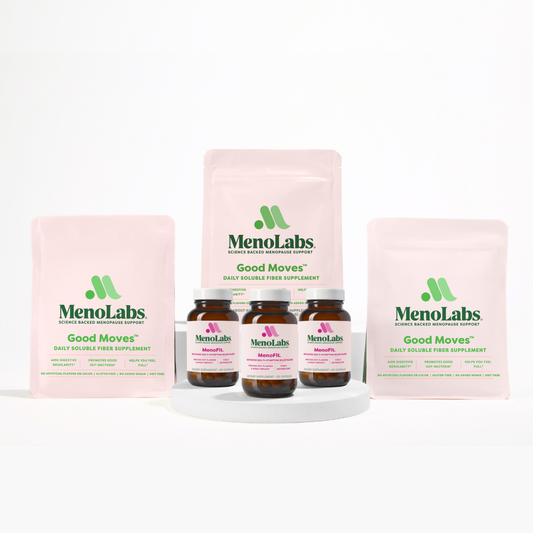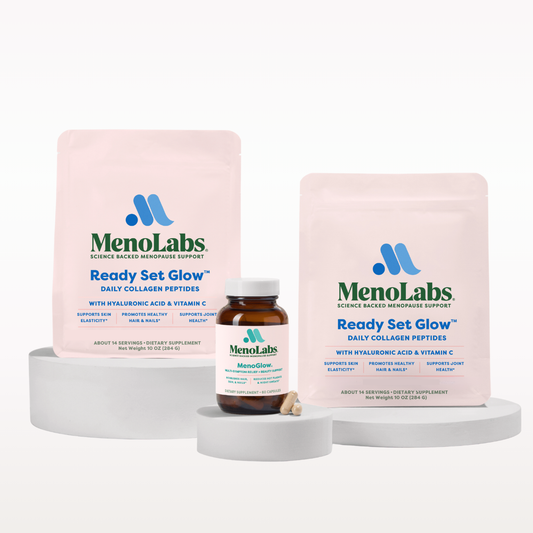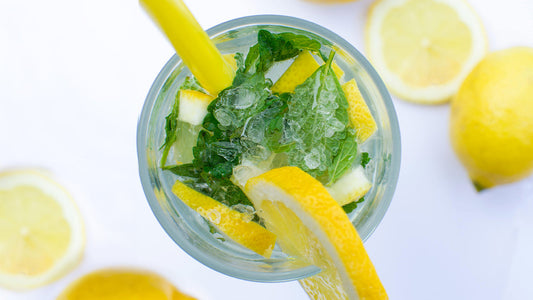The fluctuations in estrogen that women experience during peri/menopause impact everything — even our joints. Estrogen has anti-inflammatory properties, so when our levels dip, it can result in joint pain, also known as arthralgia. In fact, about half of women experience joint pain around the time of menopause. Yet there is no medical treatment available to specifically treat joint pain caused by menopause.
But that doesn’t mean there are no options when it comes to relieving peri/menopausal joint pain. In fact, one of the most recommended treatments is also the simplest: exercise. As a lack of physical activity is associated with increased muscle weakness, joint stiffness, reduced range of motion, and fatigue, regular exercise is essential for preventing and reducing joint pain.
Of course, the idea of exercise might not exactly be enticing when you’re in pain. That’s why it’s important to keep your exercise gentle, supportive, and perhaps most of all, enjoyable. Furthermore, be sure to begin and end your workout with a gentle stretching or yoga routine to maintain an optimal range of motion in the joints.
Pilates
Low-impact Pilates is designed to be accessible for a wide variety of people, so it’s a great option for someone experiencing joint pain. In fact, in the early days of developing his novel exercise method, Joseph Pilates worked on rehabilitating injured and ill people. Furthermore, studies show that Pilates has positive effects in relieving pain and enhancing overall joint mobility.
Pilates has evolved significantly from its earliest iterations. Choosing the right type of Pilates is personal, but if you’re new to the practice, you’ll want to experience at least a few in-person classes—whether they be mat, reformer, or a combination — with a trained teacher before trying it on your own. When doing Pilates, keeping the spine aligned and maintaining the breath are imperative. Having a teacher who can help you adjust your posture and remind you to breathe will train your body in proper Pilates technique Once that’s established, it’s safer to attempt doing Pilates alone or at home.
Water Exercises
Exercising in water provides buoyancy and support to alleviate joint pain while you move. Over time, exercising in the water has proven to produce a measurable decrease in joint pain versus a control group. An added bonus: working out in the water is one of the more heat-safe forms of exercise and won’t overstress your body in the warmer months.
Working out in the water doesn’t have to mean swimming laps—although that is a great form of low-impact cardio with benefits to spare. But if you want to switch it up, try incorporating water aerobics, calisthenics, and walking into your exercise routine. Your local community center or gym will likely have group classes or personal training resources to help get you started, but you can also find tutorials on YouTube if you prefer a more independent route.
Elliptical
Aerobic exercise burns excess fat, increases stamina, improves immunity, and strengthens the cardiovascular system. But if you’re already experiencing pain, going for a run outside or on the treadmill can put undue pressure on the joints, making it more uncomfortable. That’s where the elliptical comes in. When using an elliptical, both feet remain in contact with the surface, keeping the body stable and reducing the amount of stress on the hips, knees, and ankles. Ellipticals also have the benefit of optional upper-body conditioning for a more complete, full-body workout. So if you’re a jogger who has found that your knees are suddenly begging you to stop jogging, an elliptical may be the answer.
Dance
The best workout for you is one you enjoy — and what is more joyous than dancing? A series of hospital-based studies found that weekly dance programs significantly improved both life enjoyment and arthritis pain, with 53 percent of participants reporting that they experienced pain relief as a result. And a lot of that pain relief may be attributed to how it improves the mind. Along with its muscle toning and aerobic benefit, dancing has a significant positive impact on mental well-being. One UCLA survey of people who regularly dance reports a whopping 98 percent of respondents saying the practice improves their mood and 95 percent reporting that they feel more aware of their emotions.
When it comes to choosing a type of dance or dance class, you are spoiled for choice. But when it comes to people dealing with joint pain, the Arthritis Foundation recommends low-impact classes with slow, fluid movements that won’t tax your joints such as Zumba, ballroom dancing, Jazzercize Lite, and even belly dancing. Or if you prefer to exercise in the comfort of your home, there are a plethora of online classes available for you to sample while you figure out what works best for your body.
*The information found in this blog shall not be considered medical advice and is being provided for information purposes only. It is not intended to substitute professional medical advice, diagnosis, or treatment. Please consult with your healthcare provider should you have any questions or concerns.
Related Products
Blend Besties Bundle
Fresh Start Bundle
4.7 / 5.0
(552) 552 total reviews












